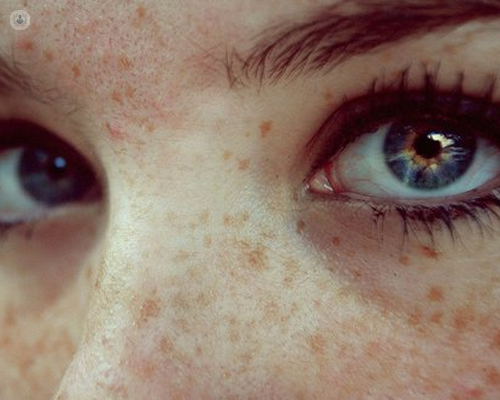

What is nystagmus?
Nystagmus is an ophthalmological condition characterised by an involuntary, repetitive movement of the eyes. The velocity of the movement varies, from fast to slow, and generally both eyes are affected. Nystagmus can be classified into different groups:
- Neurological nystagmus is related to the central nervous system; it can occur after different diseases, such as a brain tumour or multiple sclerosis.
- Idiopathic nystagmus appears in childhood, normally in the first 6 months of life. The cause is a congenital defect in the part of the nervous system responsible for stabilising the gaze.
- Sensory nystagmus is caused by a profound visual deficit during the earliest stages of growth. It is frequently due to congenital cataracts or early retinal diseases.

Symptoms of nystagmus
The most visible symptom is involuntary movement of the eyeball. However, the primary symptom is poor vision, especially with idiopathic nystagmus, given that it is more difficult to fix the gaze on the object correctly and to project a clear image onto the retina. As a result, the eye does not develop as it should.
Oscillopsia is a condition that may occur with acquired nystagmus; it is the sensation that your surroundings are moving about.
In some cases, there is a gaze position in which the movement is minimal or almost disappears. This is called the neutral zone and it may lead to torticollis, as a result of the patient moving their head and eyes to achieve this neutral zone. Torticollis refers to an abnormal, asymmetrical head or neck position.
What are the causes of nystagmus?
The cause may be congenital, either due to a genetic condition or congenital eye disease. Other causes include ingestion of certain medications, hereditary factors, trauma, inner ear problems, drug or alcohol abuse etc.
Can it be prevented?
This condition cannot be prevented. However, it is important to control alcohol consumption. It is also important to undergo annual ophthalmological evaluations.
What is the treatment?
The treatment depends on the type of nystagmus, given that each type has a range of potential causes. Treatment may consist of certain medications to reduce the movement or the use of botulinum toxin for its “paralysis” action; however both types of treatment can sometimes be associated with side-effects.
In cases of torticollis, glasses with prisms or surgery of the muscles can help to improve the position of the head, as they shift the neutral zone to somewhere in front. In addition, it may reduce the intensity of nystagmus.
